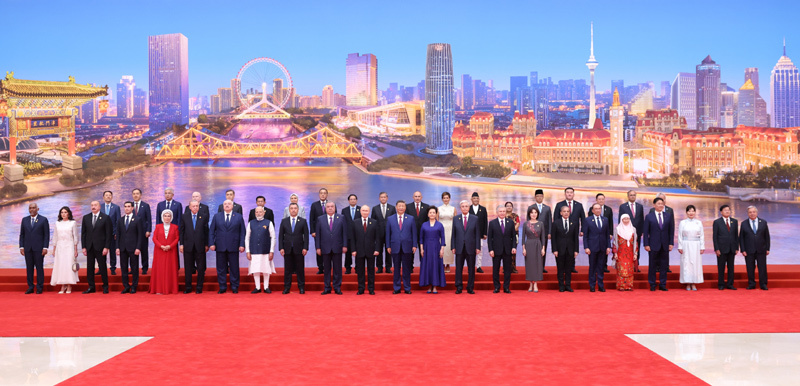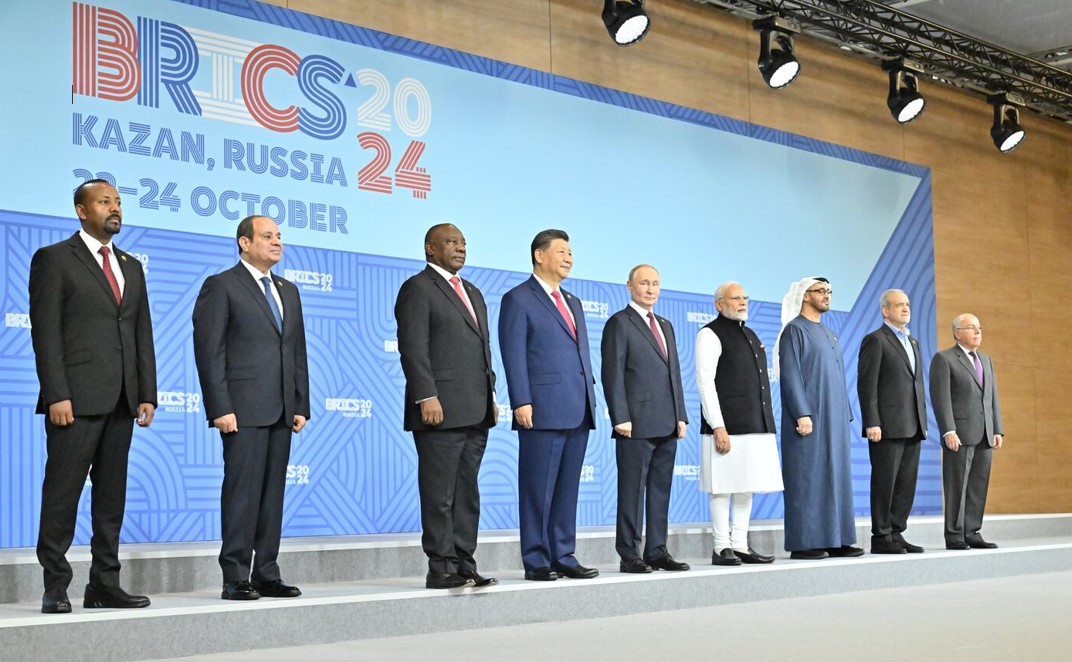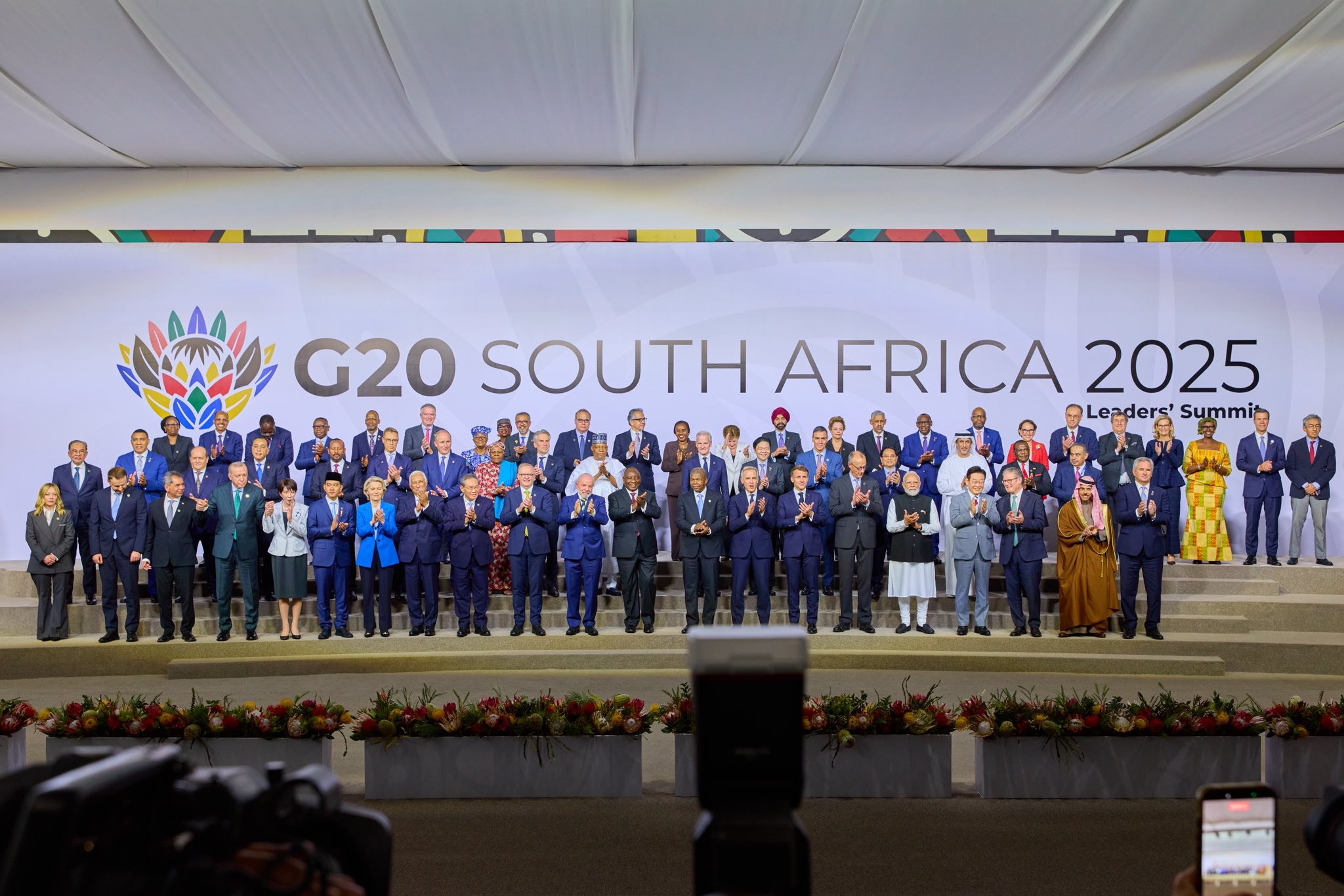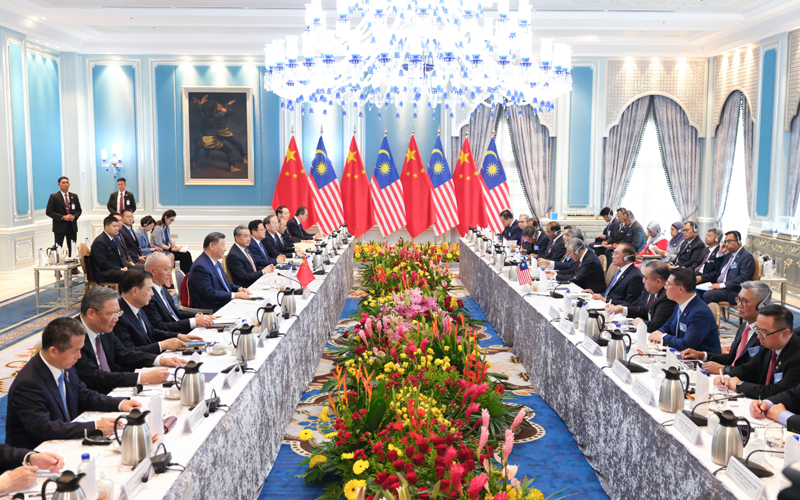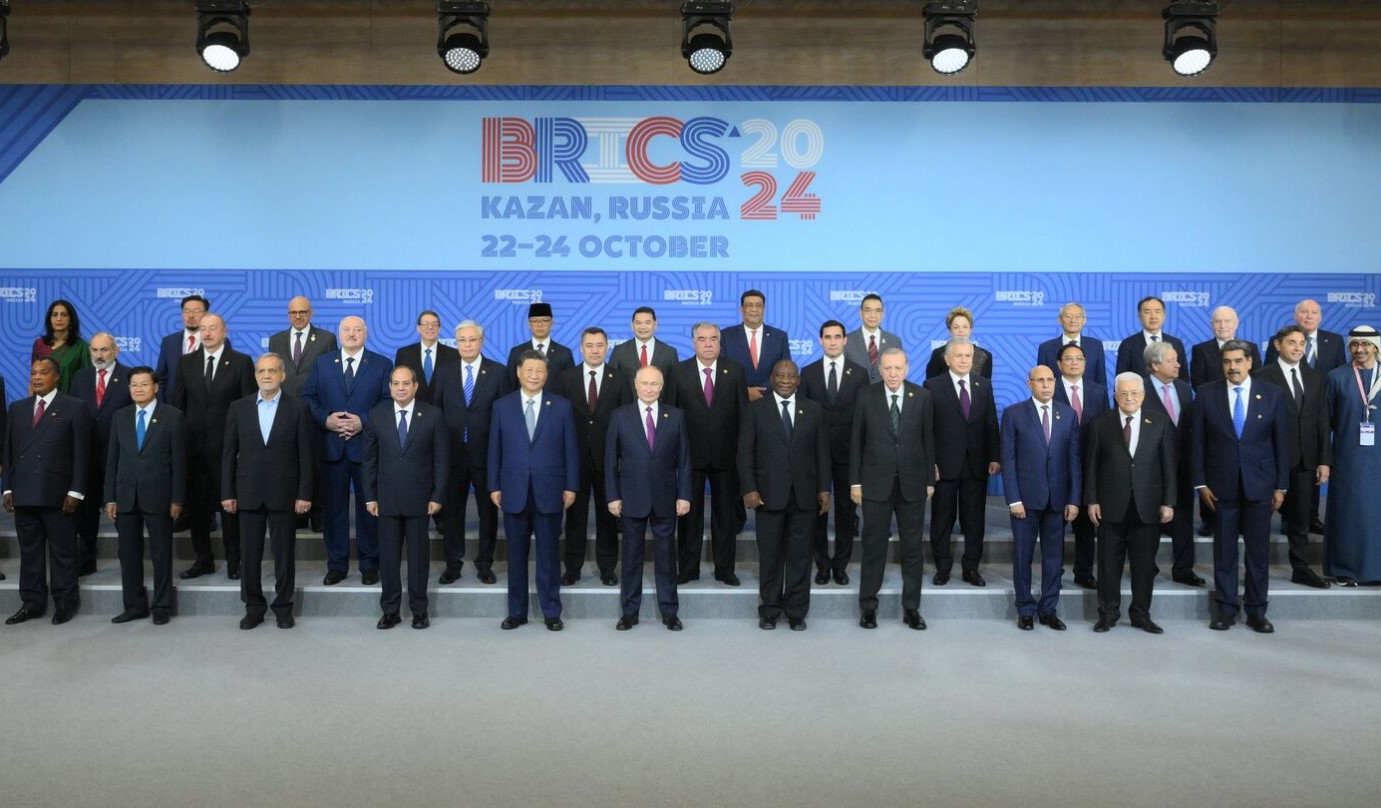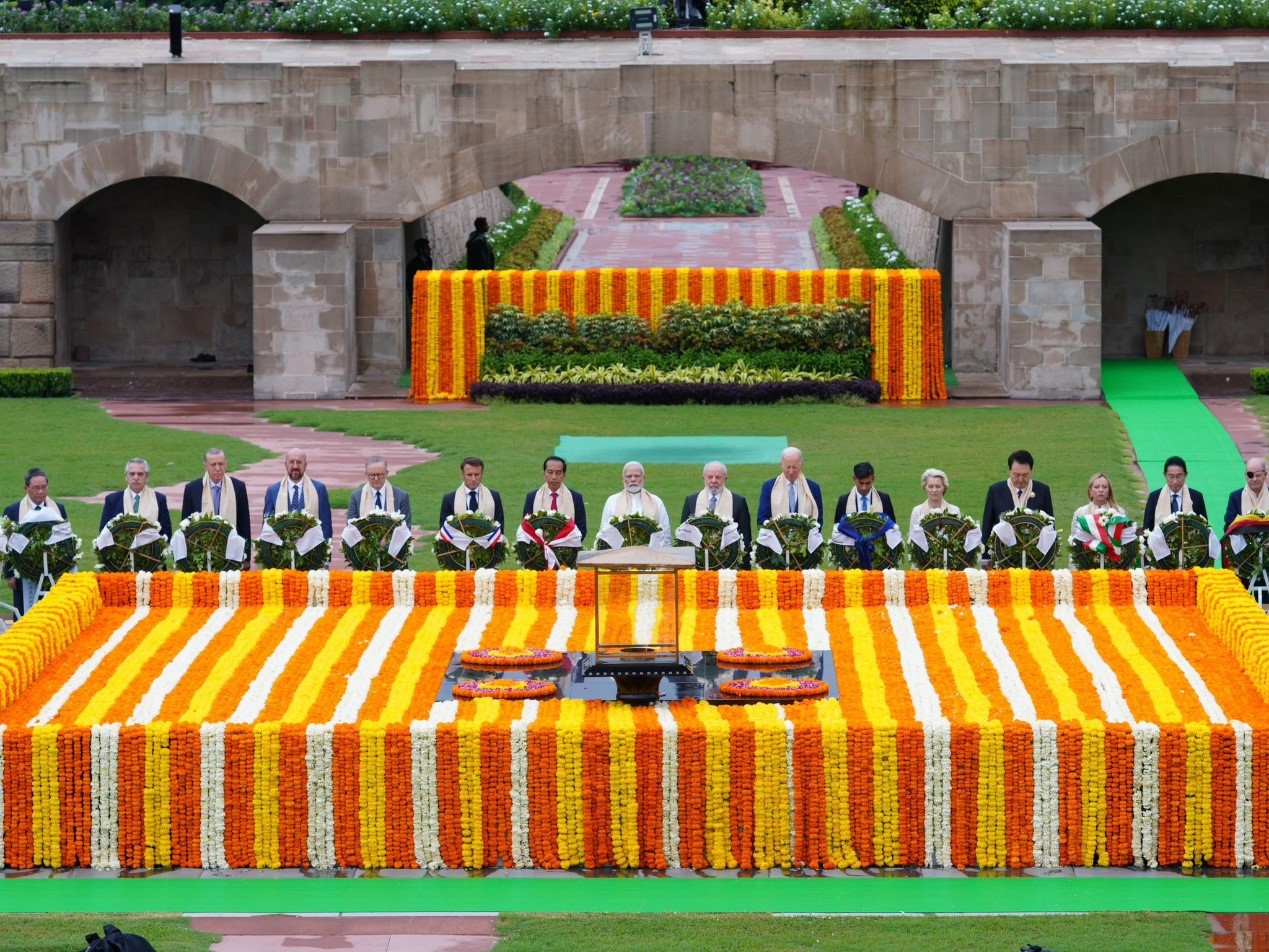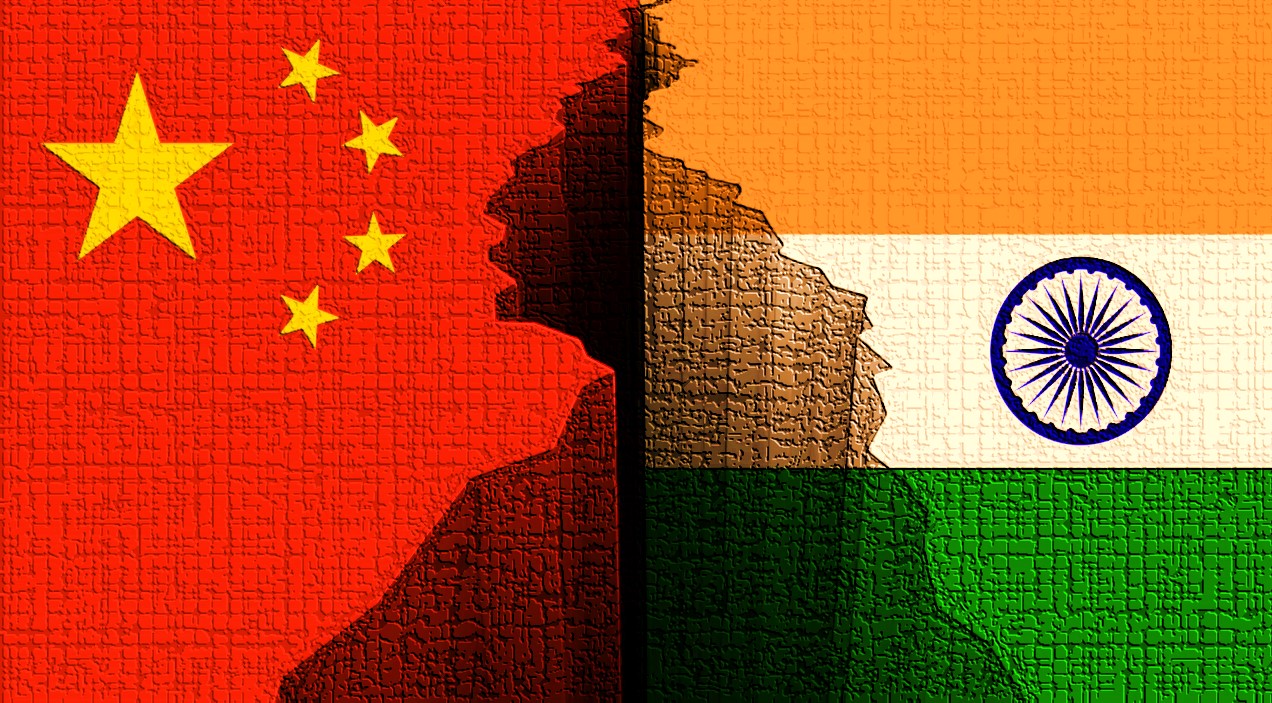The Tianjin Summit underscored that the SCO is no longer an organization that can be dismissed as peripheral. It has consolidated its identity as a platform for multipolarity, Eurasian connectivity, and Global South representation. Picture source: PRC, August 31, 2025, gov. cn, https://www.gov.cn/yaowen/liebiao/202508/content_7038568.htm.
Prospects & Perspectives No. 55
Is the SCO at a Crossroads?
By Jagannath Panda
The Shanghai Cooperation Organization (SCO) has undergone a striking transformation from a relatively marginal Eurasian security grouping to an institution that aspires to shape the contours of multipolarity in the 21st century. Initially conceived in 2001 as a regional confidence-building mechanism between China, Russia, and Central Asian republics, the SCO has gradually expanded in both membership and mandate. Its enlargement to include India and Pakistan in 2017, followed more recently by Iran, underscores its evolution into one of the world’s largest regional organizations in terms of population, geography, and potential economic weight.
The Tianjin SCO Summit, held August 31 to September 1, 2025, marked a notable juncture in this trajectory. Against the backdrop of intensified global contestations between the United States and China, sanctions against Russia, India’s pursuit of strategic autonomy, and calls from the Global South for more inclusive governance, the summit signaled both the opportunities and dilemmas that lie ahead for the SCO. This article examines the summit’s significance, the institutional dynamics it revealed, and the broader implications for Eurasia and the global order. In doing so, it situates the SCO within debates on multipolarity, regional connectivity, and global governance reform.
From Marginal Bloc to Multipolar Aspirant
For much of its early existence, the SCO was dismissed in Western strategic circles as either a talk shop or a thinly veiled Sino-Russian condominium. Its activities were largely confined to counterterrorism exercises under the Regional Anti-Terrorist Structure (RATS) and rhetorical commitments to fighting the so-called “three evils” (terrorism, separatism, extremism). The Tianjin Summit challenged this perception. It highlighted the SCO’s widening agenda, which now includes trade facilitation, energy cooperation, digital connectivity, climate change, and institutional reform at the global level.
The rhetoric of multipolarity dominated discussions. Leaders from China, Russia, and India underscored their commitment to resisting hegemonic practices and promoting a more representative order. This language, while not new, acquired greater resonance given the shifting global context, particularly U.S. unilateralism, sanctions regimes, and trade protectionism. Thus, the SCO’s role as a platform for articulating and institutionalizing multipolarity appears more substantive today than at any previous point in its history.
China’s Expanding Institutional Ambitions
China emerged from the Tianjin Summit with enhanced institutional leverage. Its proposal to establish a SCO Development Bank and a package of financial commitments, including 2 billion yuan (US$280.9 million) in grants and scholarships, alongside 10 billion yuan in concessional loans, demonstrated its readiness to anchor the SCO’s economic agenda. For Beijing, such an initiative dovetails with the Belt and Road Initiative (BRI) and allows it to extend developmental influence across Eurasia under a multilateral cover.
However, China’s activism also raises concerns of over-dependence and debt entrapment. India and other member states remain wary of Beijing’s financial statecraft, recalling cases of unsustainable debt in smaller economies under BRI projects. The challenge for the SCO will be whether the Development Bank can function as a genuinely multilateral institution or risk becoming an extension of China’s policy banks.
Beyond economics, China used the summit to reinforce narratives of resisting “trade bullying” and to promote greater use of national currencies in international trade. This aligns with its broader agenda of weakening the dominance of the U.S. dollar and building financial resilience among Global South economies. From a strategic standpoint, China’s ability to shape the SCO’s agenda underscores its centrality, though it also highlights asymmetries that could create friction with other major members.
Russia’s Stakes: Between Isolation and Strategic Relevance
For Russia, the SCO assumes heightened significance in the aftermath of Western sanctions and its confrontation with Europe over Ukraine. The organization provides Moscow with diplomatic legitimacy, alternative economic channels, and a semblance of strategic parity with China. Although it could be contested that Russia plays the junior partner in the evolving Sino-Russian relationship, the SCO allows Moscow to showcase its enduring relevance in Eurasia.
Energy trade remains Russia’s strongest card. With Europe reducing dependence on Russian hydrocarbons, Moscow has turned eastward, expanding sales to India and China. Within the SCO, it seeks to institutionalize such flows and promote new pipeline projects, thus embedding itself within Eurasia’s future energy architecture. At the same time, Russia values India’s membership as a balancing factor against Chinese dominance, thereby preserving a measure of multipolarity within the organization itself.
India’s Strategic Calculus
India’s participation in the SCO has always been cautious and pragmatic. Long skeptical of China’s close ties with Pakistan and wary of legitimizing Beijing-led platforms, New Delhi nonetheless recognizes the SCO’s value in pursuing energy security, Central Asian access, and counterterrorism cooperation. The Tianjin Summit reinforced this calculus.
First, India leveraged the summit to reiterate its long-standing call for United Nations Security Council reform, thereby aligning SCO discussions with global governance debates. Second, New Delhi emphasized counterterrorism and secured references to specific incidents of cross-border terrorism, signaling its unwillingness to allow Pakistan’s positions to dominate. Third, India showcased its doctrine of multi-alignment, underscoring that participation in Western-led forums such as the Quad does not preclude engagement in Eurasian institutions like the SCO.
For India, the SCO is not merely a vehicle for balancing China; it is also an avenue to strengthen relations with Russia, diversify energy supplies, and expand its footprint in Central Asia. At the same time, New Delhi remains skeptical of initiatives that might entrench Chinese dominance, such as the SCO Development Bank, indicating that its engagement will remain both instrumental and conditional.
The SCO and the Global South
One of the most notable aspects of the Tianjin Summit was the SCO’s positioning as a voice for the Global South. Both India and China sought to claim leadership in representing developing countries’ concerns, including climate mitigation, equitable growth, and resilience in global supply chains.
This emphasis resonates with broader trends in global politics, where institutions like BRICS+ have gained momentum as platforms for non-Western cooperation. The SCO, with its diverse membership spanning South, Central, and West Asia, is uniquely placed to contribute to this trend. Yet, internal rivalries, particularly India-Pakistan tensions and Sino-Indian competition, risk undermining its ability to act cohesively.
Eurasian Connectivity and Energy Futures
The SCO’s vision for Eurasia emphasizes supply chain diversification, digital connectivity, and energy transition. Discussions at Tianjin included expanding the Digital Silk Road, building new pipelines, and exploring collaboration in renewable energy. Such initiatives could enhance Eurasia’s economic resilience and reduce dependence on Western-dominated routes.
At the same time, the SCO faces questions of feasibility. Competing infrastructure visions — China’s BRI, India’s International North-South Transport Corridor (INSTC), and Europe’s Global Gateway — reflect both opportunities for synergy and risks of fragmentation. Whether the SCO can act as a platform to reconcile these visions or merely as a forum for rhetorical consensus will determine its future relevance.
Institutional Dilemmas and Challenges
Despite its growing visibility, the SCO continues to grapple with several institutional dilemmas that may constrain its effectiveness. The first is the problem of power asymmetry. China’s economic and political dominance within the organization often generates unease among other members, especially India, which fears that the SCO could evolve into little more than a vehicle for Beijing’s strategic agenda. A second challenge is the diversity of agendas that the SCO has taken on. By attempting to cover a wide range of issues — from counterterrorism and trade to climate change and digital cooperation — the organization risks spreading itself too thin and failing to generate meaningful outcomes in any one area. Third, intra-member rivalries remain a persistent obstacle.
The long-standing disputes between India and Pakistan, as well as strategic mistrust between China and India, can paralyze consensus and weaken the collective credibility of the institution. A fourth difficulty lies in the implementation gap. While summit declarations and roadmaps often articulate ambitious goals, mechanisms for enforcement and monitoring remain weak, resulting in a significant discrepancy between rhetoric and practice. Finally, the SCO operates under constant external pressures, particularly from the United States and other Western actors who impose sanctions, shape global financial rules, and promote competing regional frameworks. These pressures inevitably limit the room for maneuver and test the SCO’s ability to function as a genuinely autonomous multilateral platform.
The SCO at a Crossroads?
The Tianjin Summit underscored that the SCO is no longer an organization that can be dismissed as peripheral. It has consolidated its identity as a platform for multipolarity, Eurasian connectivity, and Global South representation. For China, it offers an avenue to extend developmental influence; for Russia, it provides diplomatic legitimacy amidst Western isolation; for India, it serves as a vehicle for strategic diversification and Central Asian outreach.
Yet, the SCO’s ability to deliver on its promises remains uncertain. Its future will hinge on whether it can balance Chinese activism with genuine multilateralism, translate rhetorical commitments into tangible projects, and manage intra-member rivalries. Ultimately, the SCO’s trajectory will reflect the broader contestations of the global order: whether multipolarity can evolve into cooperative governance, or whether it will remain a rhetorical counterpoint to Western dominance. In this sense, the SCO represents both an experiment and a litmus test for the viability of non-Western multilateralism in the 21st century. The Tianjin Summit illuminated its potential; the coming years will determine whether that potential can be realized.
(Dr. Jagannath Panda is the Head of the Stockholm Center for South Asian and Indo-Pacific Affairs at the Institute for Security and Development Policy in Sweden, and the Series Editor for the Routledge Studies on Think Asia.)


